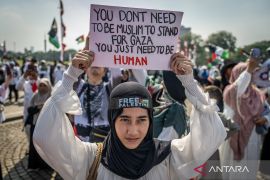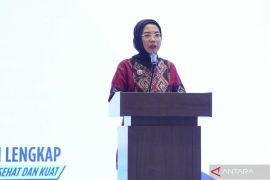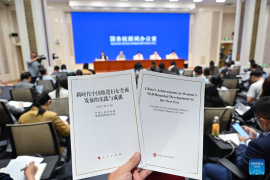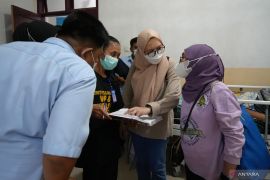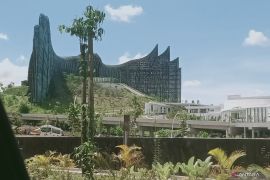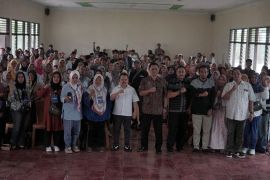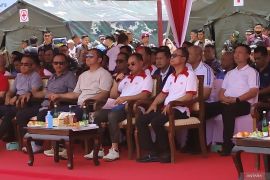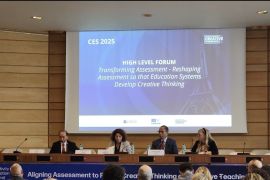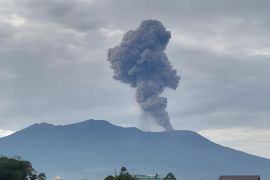Gellywnn further stated that, BIMP-EAGA meeting can be a momentum and strategic movement towards the effective implementation as well as strengthen cooperation among the regions to make the Eastern ASEAN as a food basket worldwide to anticipate global food crisis. "This meeting also discussed on developments in forming the fundamental of realization in 2015 ASEAN Community, particularly through the regional economy integration to agro-industry and fisheries as well as the growth on the implementation of ASEAN Integrated on Food Security (AIFS)," continued Gellywnn. Meanwhile, the Governor of East Kalimantan, Awang Faroek Ishak, in his speech, welcome the implementation of this meeting in order to establish the partnership between four countries as East Kalimantan is one of the provinces which highly concentrated in developing agro-industry and fishery although the province has abundant natural resources of oil. According to him, the idea of BIMP-EAGA to establish the food basket for ASEAN countries is appropriate because the needs of food becomes very important currently and in the future. Accordingly, the meeting of BIMP-EAGA aims to facilitate the private sector to actively engage in encouraging the market to develop the economy flows in border area from four countries. Related to this, BIMP-EAGA open up the greater opportunities to private sector through BEBC (BIMP-EAGA Business Council) to achieve the growth of regional development. The economic development in the area borders based on the principle of complementary, shared the natural resources, specialization and regionalization of production," explains Gellywnn.
Gellywnn is grateful related to the legalization of cooperation in agriculture and fishery sectors by leaders at the 8th BIMP-EAGA Summit in Cambodia. According to Gellywnn, the legalization of increased cooperation can not be separated from some progress which has been achieved from the previous proposals, such as increasing the rice production project, increasing the plantation sector project, and seaweed development project.
Seaweed is one of the superior commodity of MMAF, has large potential to be developed. Seaweed cultivation using small business capital with technologies that have been mastered and followed by the relatively short growing season for 45 days, thus allowing the seaweed cultivation to improve local people's opinions while absorbing a lot of manpower. In 2011, the whole production of seaweed reached 4,305,027 tons. Meanwhile, in 2012, MMAF has targeted the production of 5.1 million tons of seaweed and make Indonesia is the world's leading manufacturer of seaweed.
In supporting the development of food basket in eastern of ASEAN region, Indonesia has prepared a policy breakthrough, which is "Industrialization of marine and fisheries." Gellywnn said, fisheries industrialization policy which brought by MMAF is a system integration of upstream and downstream production to increase the added-value, productivity, and scale production of marine and fisheries. These four countries are also optimistic that food basket strategy will be able to ensure long-term food security in optimizing the potential of products for export, and seeking sustainable life for farmers and fishermen," continued Gellywnn.
To support of industrialization, MMAF has targeted the fishery production. This year about 14,851,990 tons, from aquaculture as much as 9.4157 million tons and fishing as much as 5.43629 million tons. A total of four aquaculture commodities have been designated as a commodity, including shrimp, seaweed, catfish and bass. While fishing is also set three commodities, such as Tuna, Cakalang and Cob (TCT). Increased production is in line with one of the targets from BIMP-EAGA, which makes the region as the global food basket of ASEAN.
The cooperation was officialy established at the 1st Ministerial Conference (PTM) in Davao City, Philippines on March 26, 1994 which aimed to enhance public welfare and economic growth in border countries of BIMP-EAGA. This meeting will be held in Balikapan, East Kalimantan which is the 10th meeting and will lasted for three days, from 14 to 16 May 2012.
Indonesia is become a member of BIMP-EAGA including West Kalimantan, East Kalimantan, South Kalimantan, Central Kalimantan, North Sulawesi, Southeast Sulawesi, South Sulawesi, Central Sulawesi, West Sulawesi, Gorontalo, Maluku, North Maluku, Papua and West Papua. These regions are target areas for the development of marine economy which summarized in the context of marine and fisheries industrialization.
For more information, please contact Indra Sakti, SE, MM, Head of Data, Statistic and Information Center, Ministry of Marine Affairs and Fisheries (Mobile: 0818159705)
Reporter: Okta
Editor: PR Wire
Copyright © ANTARA 2012
